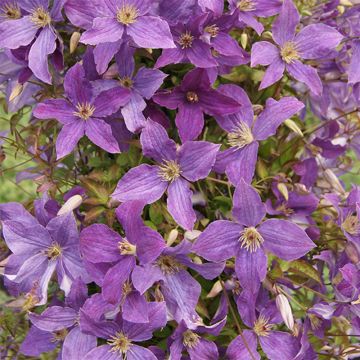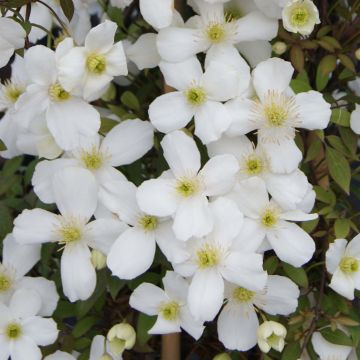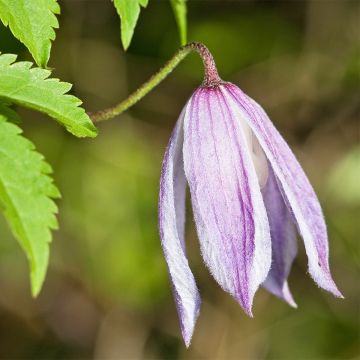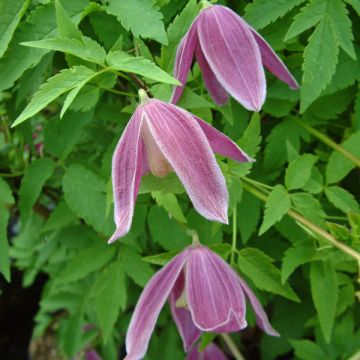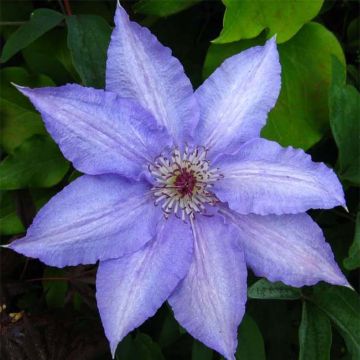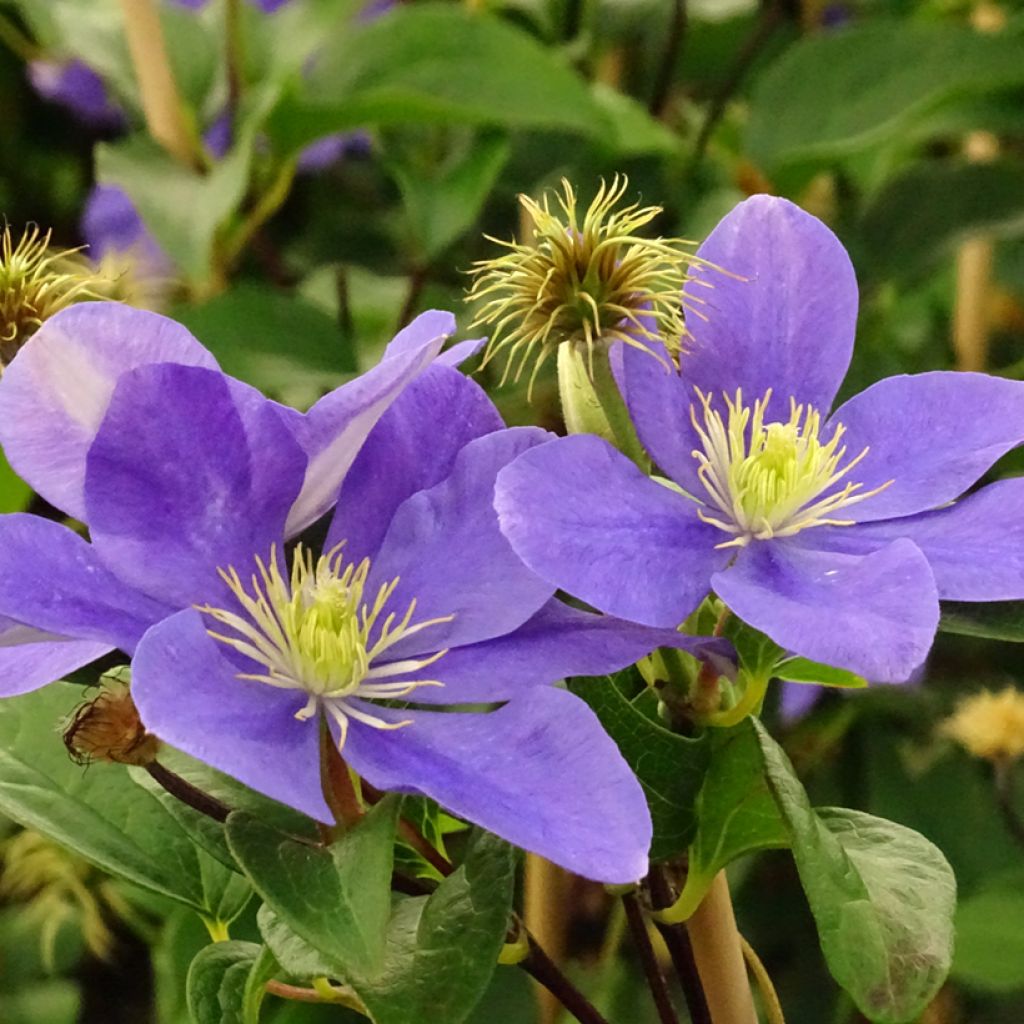

Clematis patens Fujimusume
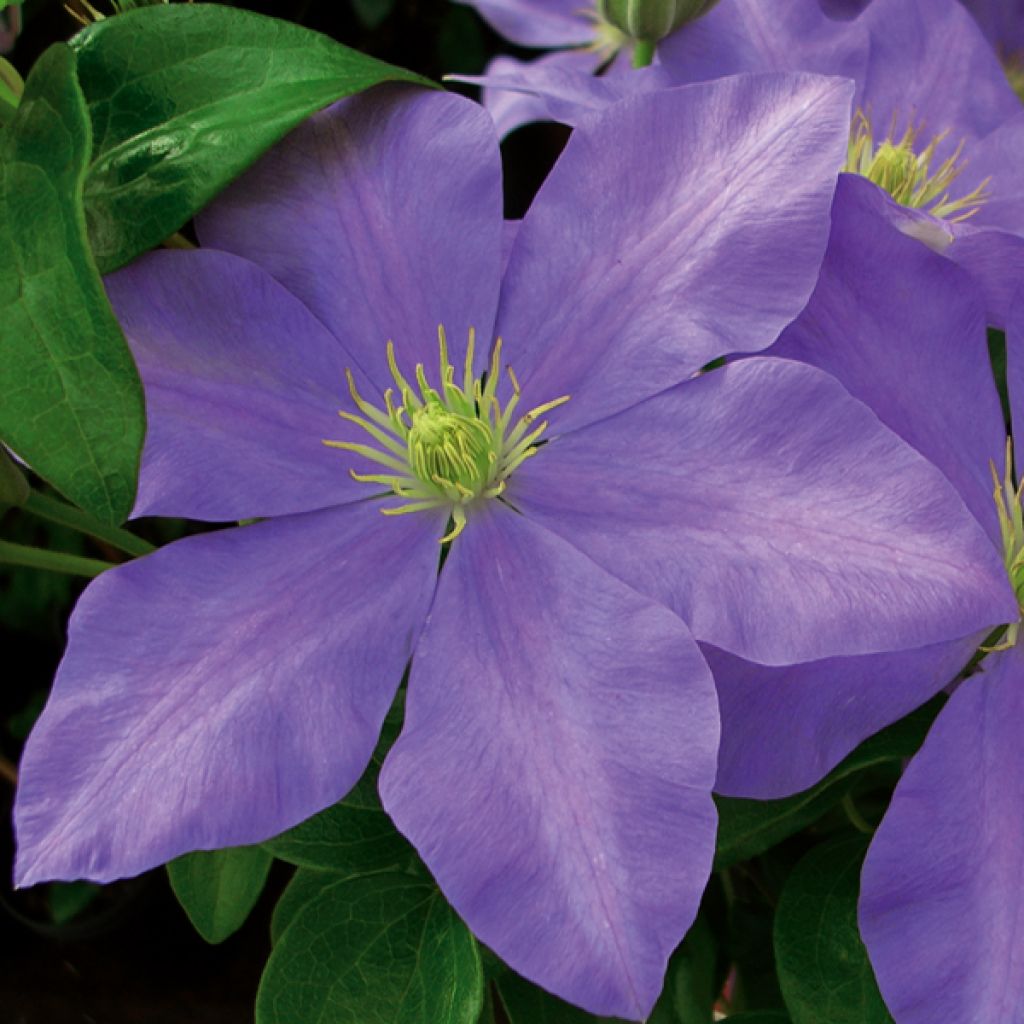

Clematis patens Fujimusume
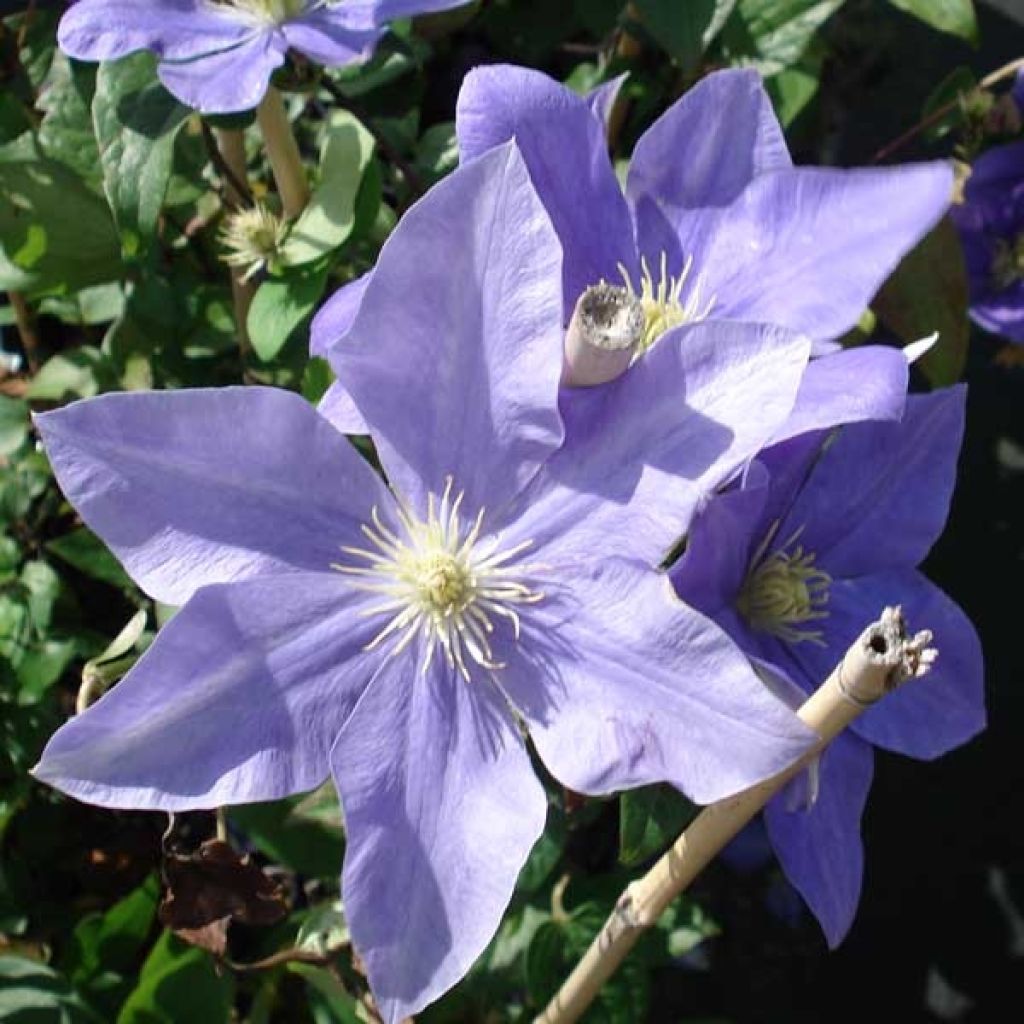

Clematis patens Fujimusume
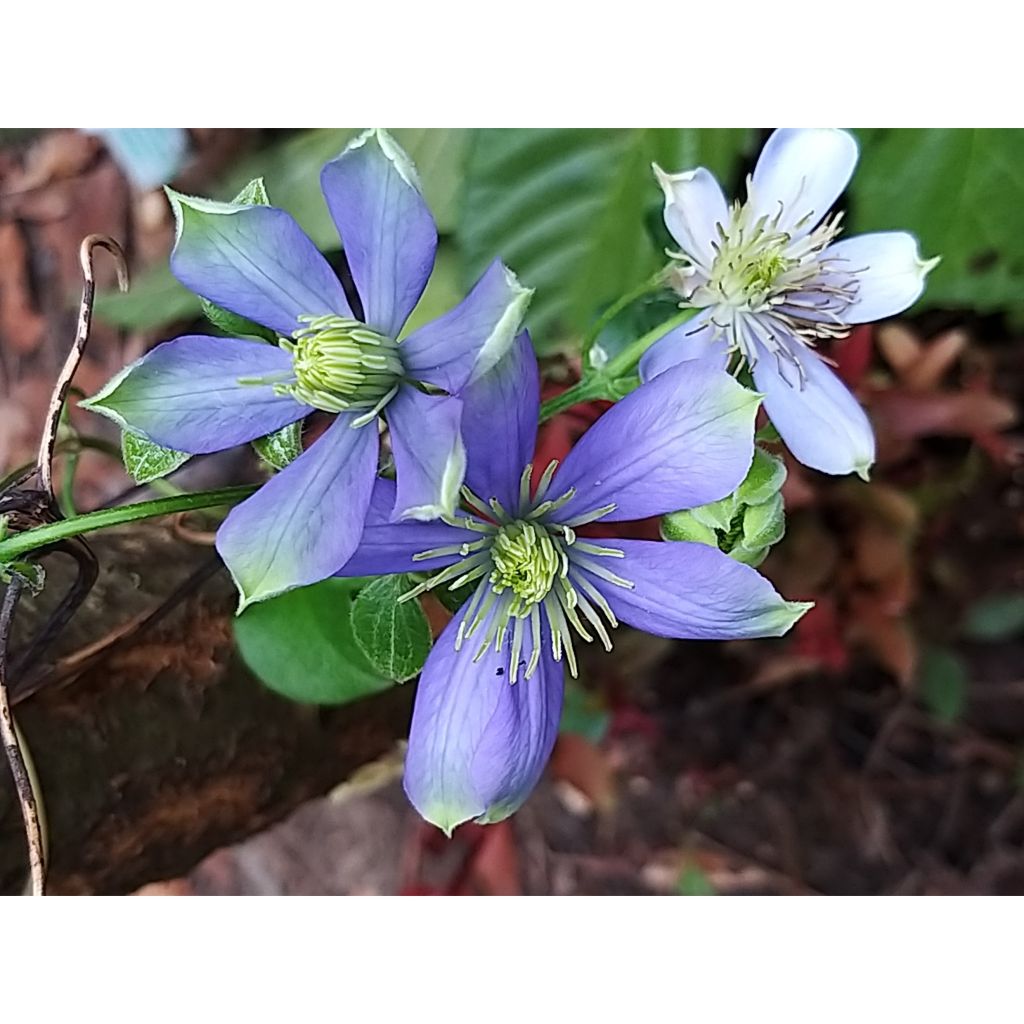

Clematis patens Fujimusume
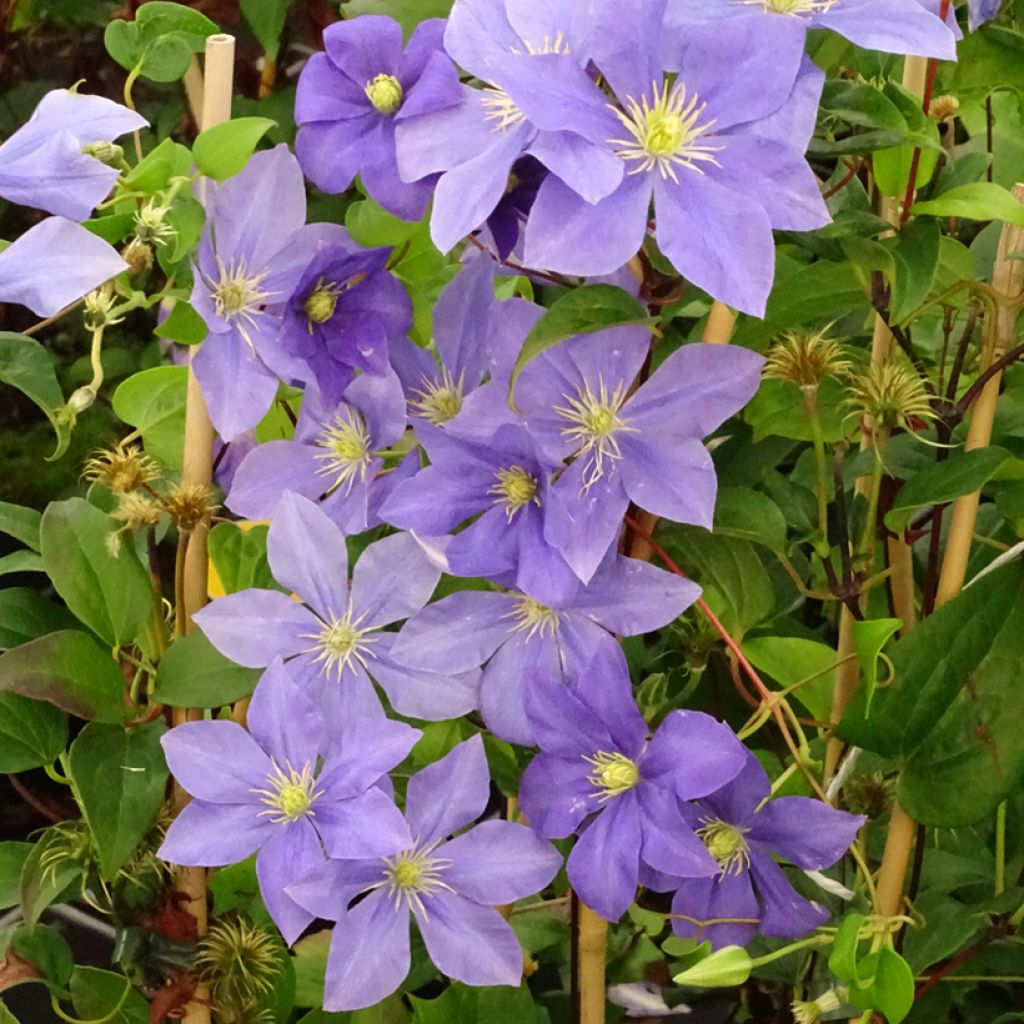

Clematis patens Fujimusume
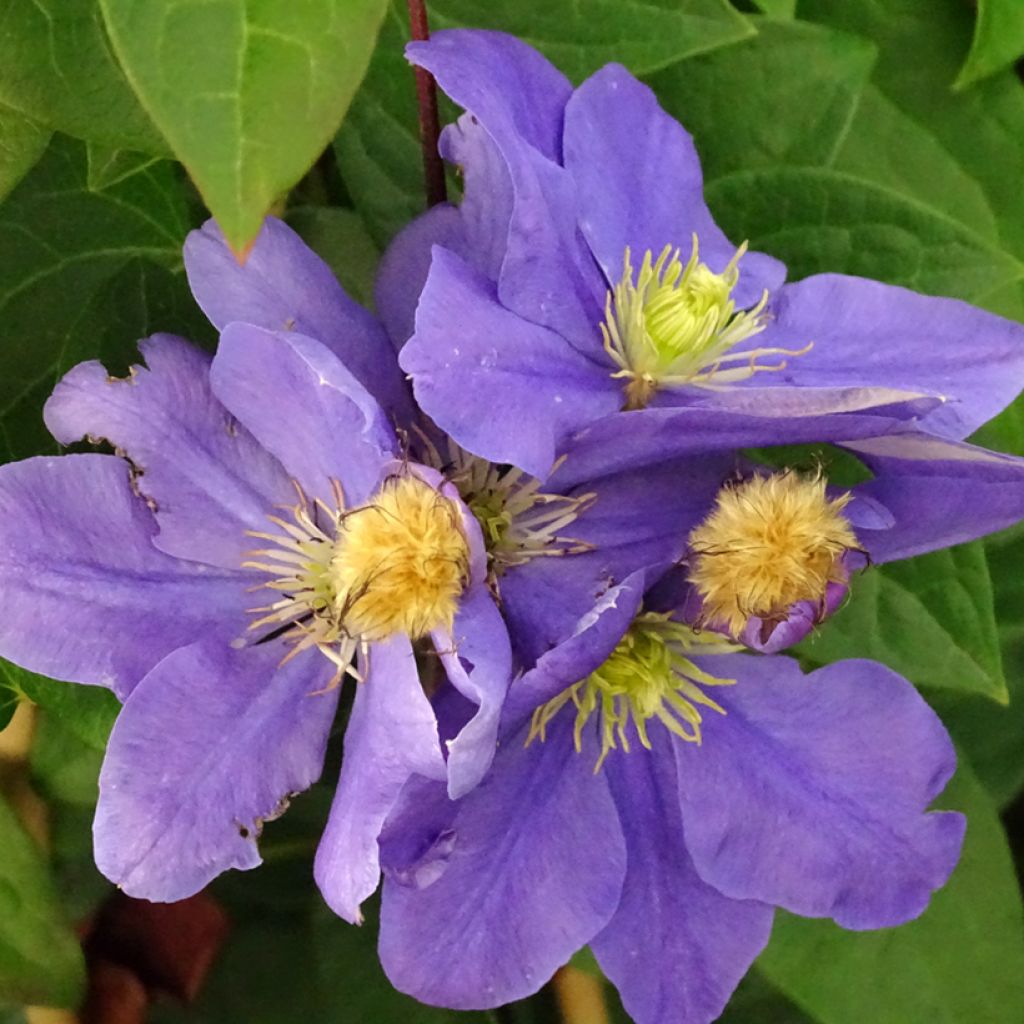

Clematis patens Fujimusume
Clematis patens Fujimusume
Clematis patens Fuji Musume
Clematis 'Fujimusume'
This item cannot be shipped to the selected country
Delivery charge from €5.90
More information
Schedule delivery date,
and select date in basket
This plant carries a 6 months recovery warranty
More information
We guarantee the quality of our plants for a full growing cycle, and will replace at our expense any plant that fails to recover under normal climatic and planting conditions.
From €5.90 for pickup delivery and €6.90 for home delivery
Express home delivery from €8.90.

Does this plant fit my garden?
Set up your Plantfit profile →
Description
Clematis 'Fujimusume' is a climbing plant that boasts a beautiful flowering with soft and bright hues. Its large single flowers first bloom in the middle of spring and display a radiant light blue colour, complemented by a centre of cream stamens. It then rewards us with a second flowering in late summer. It is suitable for containers and will perfectly cover trellises and columns.
This variety was developed in 1952. It comes from Japan, as its name suggests. It is the result of hybridisation work by Seejuuroo Arai, and pays tribute to a Kabuki dance called the Wisteria Maiden. From May to June, it produces large, single flowers, measuring about 15cm (6in) in diameter. The flowers bloom on the previous year's branches. These flowers consist of 6 to 8 obovate and acuminate tepals that overlap and are slightly recurved. They fully open into a star shape, revealing a centre of pale-yellow, almost cream-coloured, stamens. They perfectly complement the fresh blue of the lightly veined tepals. From September to October, a second flowering emerges from the current year's stems. The deciduous green leaves are composed of 3 to 5 leaflets. They are carried by voluble stems that twine around their support. It can reach a height of up to 2m (7ft),
Like most of its relatives, 'Fujimusume' prefers light, deep, moist, and fertile soil that is ideally neutral. It appreciates a sunny or partially shaded exposure, with its base always in the shade. It is resistant to cold and does not fear frost, even if it is severe. However, it does not like stagnant moisture, so the substrate must be well-draining and watering should be moderate (if necessary during the first year). It can be grown in a container if it is large enough (minimum 60cm (24in) in diameter).
The colours displayed by 'Fujimusume' perfectly embody a romantic spirit. They reflect freshness, innocence, and a certain nostalgia. They will bring light around a window with a trellis, on a column in a rustic-looking flower bed, or on the trunk of a tree with a wire mesh. Pair it with its relatives 'I Am Stanislaus' or 'Mme Lecoultre' for variety in colours or forms. It also works well with a climbing rose. It will look wonderful in a container with spring bulbs, or with grasses if grown in the middle of a flower bed.
Report an error about the product description
Clematis patens Fujimusume in pictures
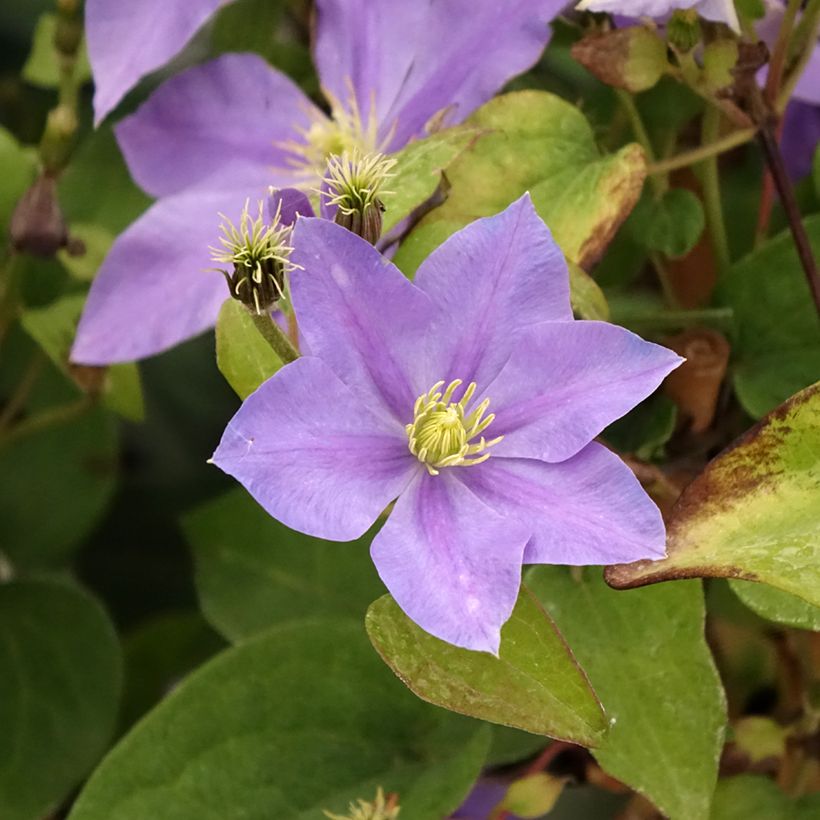

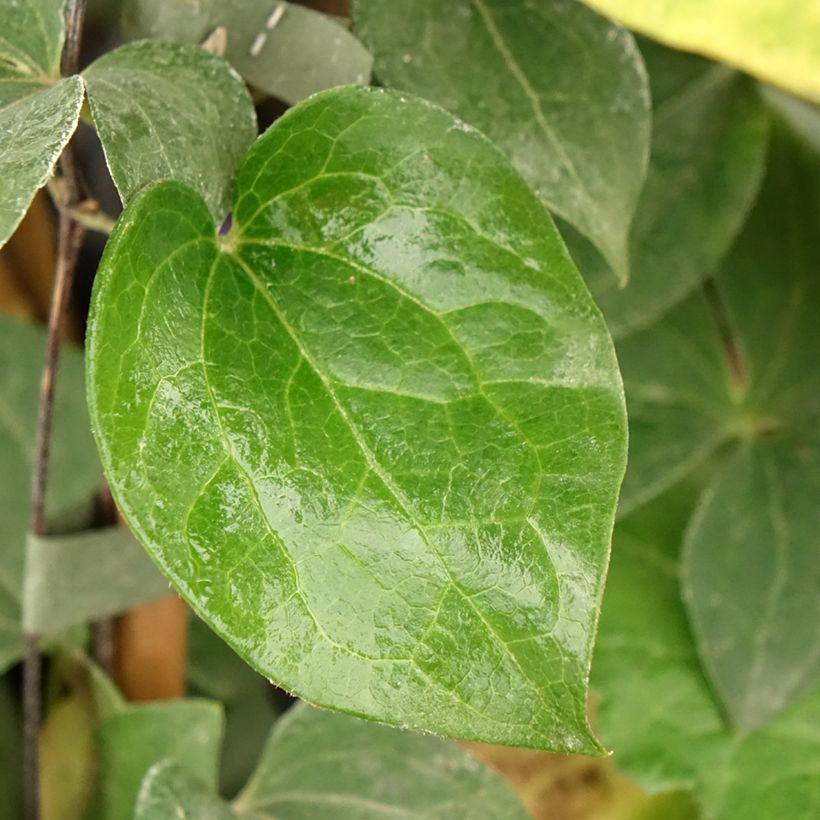



Plant habit
Flowering
Foliage
Botanical data
Clematis
patens
Fuji Musume
Ranunculaceae
Clematis 'Fujimusume'
Cultivar or hybrid
Other Clematis A to Z
Planting and care
Plant in spring or autumn. Choose a location where the head of the clematis is in the sun (or partial shade) and the roots are in shade. Keep in mind that the colours will not be as intense if it is placed in full sun, but the flowering will be more abundant. It prefers relatively moist but not waterlogged, deep, well-worked, well-drained, rich soil. Plant at a depth of 5cm (2in), with the root ball placed diagonally or even horizontally on the soil. To create the shade needed at the base, place a flat tile in front of the stump or use ground cover plants. Cover the base with a small mound of soil to encourage the emergence of new shoots.
After planting, prune the stems to 30cm (12in) above a pair of buds. Train them loosely to help the plant attach itself in the future.
Maintenance pruning should be done after flowering (in mid-summer) to remove faded flowers and shorten the stems that have bloomed. This will help the plant produce new shoots for a second flowering. More vigorous pruning can be done in spring, before the start of vegetation, to cut back certain stems more severely. However, this level of pruning is not necessarily required every year.
Watch out for pests such as aphids and gastropods.
Planting period
Intended location
Care
-
, onOrder confirmed
Reply from on Promesse de fleurs
Clematis
Haven't found what you were looking for?
Hardiness is the lowest winter temperature a plant can endure without suffering serious damage or even dying. However, hardiness is affected by location (a sheltered area, such as a patio), protection (winter cover) and soil type (hardiness is improved by well-drained soil).

Photo Sharing Terms & Conditions
In order to encourage gardeners to interact and share their experiences, Promesse de fleurs offers various media enabling content to be uploaded onto its Site - in particular via the ‘Photo sharing’ module.
The User agrees to refrain from:
- Posting any content that is illegal, prejudicial, insulting, racist, inciteful to hatred, revisionist, contrary to public decency, that infringes on privacy or on the privacy rights of third parties, in particular the publicity rights of persons and goods, intellectual property rights, or the right to privacy.
- Submitting content on behalf of a third party;
- Impersonate the identity of a third party and/or publish any personal information about a third party;
In general, the User undertakes to refrain from any unethical behaviour.
All Content (in particular text, comments, files, images, photos, videos, creative works, etc.), which may be subject to property or intellectual property rights, image or other private rights, shall remain the property of the User, subject to the limited rights granted by the terms of the licence granted by Promesse de fleurs as stated below. Users are at liberty to publish or not to publish such Content on the Site, notably via the ‘Photo Sharing’ facility, and accept that this Content shall be made public and freely accessible, notably on the Internet.
Users further acknowledge, undertake to have ,and guarantee that they hold all necessary rights and permissions to publish such material on the Site, in particular with regard to the legislation in force pertaining to any privacy, property, intellectual property, image, or contractual rights, or rights of any other nature. By publishing such Content on the Site, Users acknowledge accepting full liability as publishers of the Content within the meaning of the law, and grant Promesse de fleurs, free of charge, an inclusive, worldwide licence for the said Content for the entire duration of its publication, including all reproduction, representation, up/downloading, displaying, performing, transmission, and storage rights.
Users also grant permission for their name to be linked to the Content and accept that this link may not always be made available.
By engaging in posting material, Users consent to their Content becoming automatically accessible on the Internet, in particular on other sites and/or blogs and/or web pages of the Promesse de fleurs site, including in particular social pages and the Promesse de fleurs catalogue.
Users may secure the removal of entrusted content free of charge by issuing a simple request via our contact form.
The flowering period indicated on our website applies to countries and regions located in USDA zone 8 (France, the United Kingdom, Ireland, the Netherlands, etc.)
It will vary according to where you live:
- In zones 9 to 10 (Italy, Spain, Greece, etc.), flowering will occur about 2 to 4 weeks earlier.
- In zones 6 to 7 (Germany, Poland, Slovenia, and lower mountainous regions), flowering will be delayed by 2 to 3 weeks.
- In zone 5 (Central Europe, Scandinavia), blooming will be delayed by 3 to 5 weeks.
In temperate climates, pruning of spring-flowering shrubs (forsythia, spireas, etc.) should be done just after flowering.
Pruning of summer-flowering shrubs (Indian Lilac, Perovskia, etc.) can be done in winter or spring.
In cold regions as well as with frost-sensitive plants, avoid pruning too early when severe frosts may still occur.
The planting period indicated on our website applies to countries and regions located in USDA zone 8 (France, United Kingdom, Ireland, Netherlands).
It will vary according to where you live:
- In Mediterranean zones (Marseille, Madrid, Milan, etc.), autumn and winter are the best planting periods.
- In continental zones (Strasbourg, Munich, Vienna, etc.), delay planting by 2 to 3 weeks in spring and bring it forward by 2 to 4 weeks in autumn.
- In mountainous regions (the Alps, Pyrenees, Carpathians, etc.), it is best to plant in late spring (May-June) or late summer (August-September).
The harvesting period indicated on our website applies to countries and regions in USDA zone 8 (France, England, Ireland, the Netherlands).
In colder areas (Scandinavia, Poland, Austria...) fruit and vegetable harvests are likely to be delayed by 3-4 weeks.
In warmer areas (Italy, Spain, Greece, etc.), harvesting will probably take place earlier, depending on weather conditions.
The sowing periods indicated on our website apply to countries and regions within USDA Zone 8 (France, UK, Ireland, Netherlands).
In colder areas (Scandinavia, Poland, Austria...), delay any outdoor sowing by 3-4 weeks, or sow under glass.
In warmer climes (Italy, Spain, Greece, etc.), bring outdoor sowing forward by a few weeks.

































